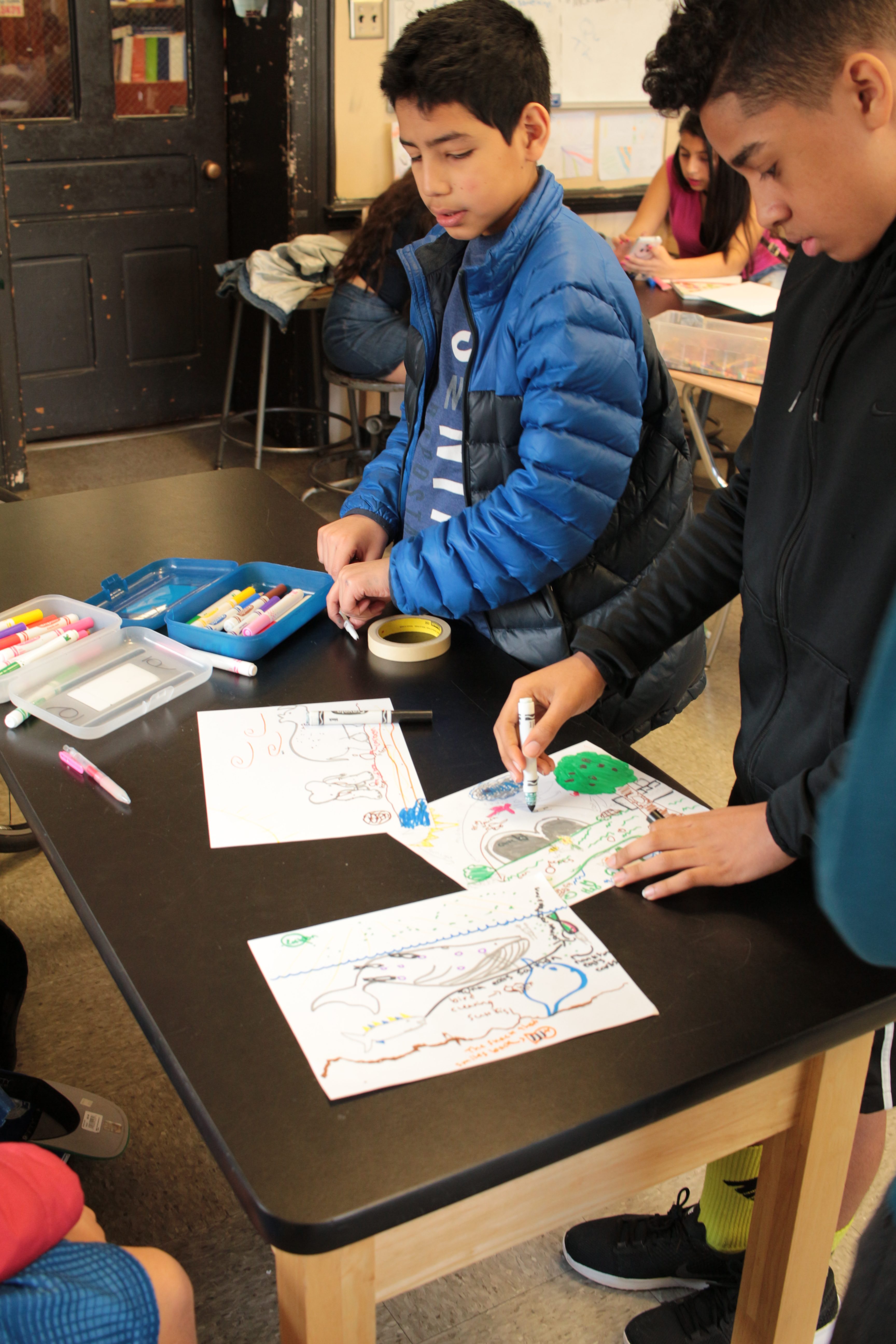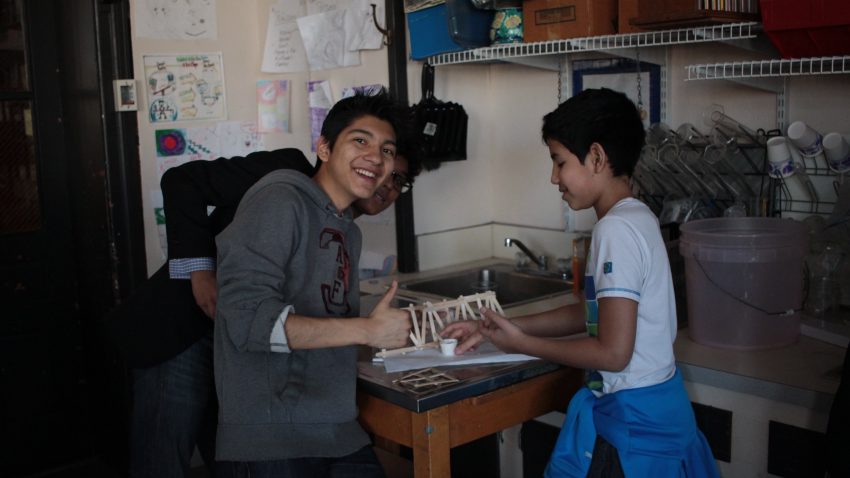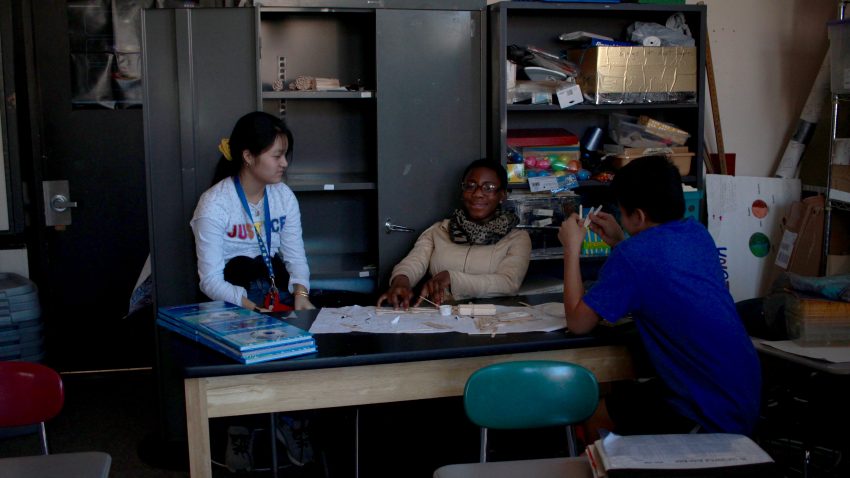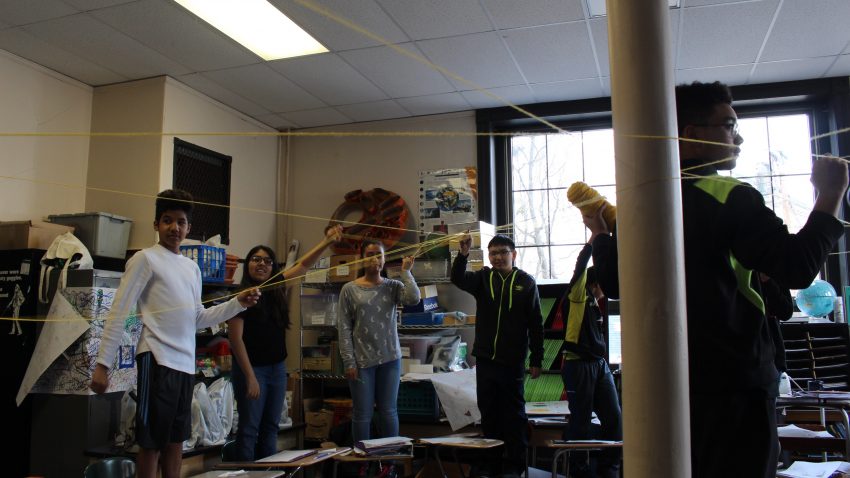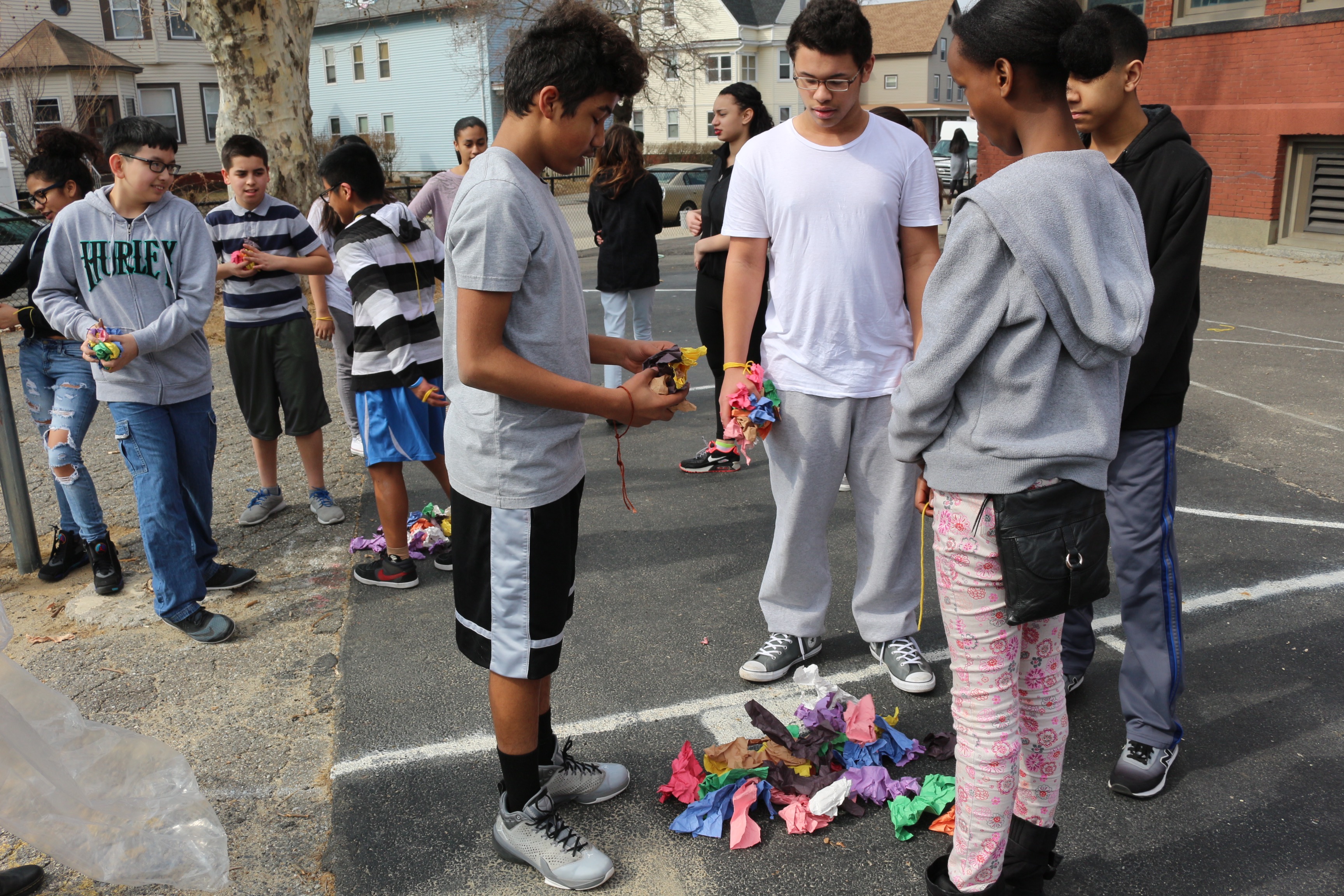Five months ago today, I formalized my existing ideas into my teaching philosophy. They represented thoughts and goals I had at the time on what I aim to accomplish through my teaching practice. My focus was on learning to embrace failure, providing rich experiences, and helping students establish a transferrable skill set. These were aspects of my education growing up that I feel have contributed to my own academic and professional success. Now that I have had more practice, I can describe how these ideas came to life in my classroom. These goals and ideals represent two larger concept: interdisciplinary work and interactive lessons.
In a lot of my early lessons I had tried to take lessons I picked up from outside resources, outdoor education or other teachers and tried to make them fit. They wouldn’t work as well and would lead to a variety of issues with behavior management and issues with engagement. Still, I saw value in the professional experiences in ecology and community organizing and wanted to include them somehow. Figuring how to adapt the material and augment it with content is how I accomplished this. What I find most valuable about my time here with my eighth graders is that I can use the classroom culture I have developed to stay after the program ends to test out curriculum that I will be using when I get a full-time teaching position.
Interdisciplinary work includes everything I do on my end in composing lessons and in the actual teaching of the lessons themselves. I draw upon resources outside of my discipline and look within toward indirectly relevant skills that I possess to solve the problems that come up. The concept of transfer is something I allude to in my reflections through work and in life. It turns out that the practice of transferring skills is essential to and an integral part of learning.
To create interactive lessons, I provide many ways for my students to use and apply the key concept of any given topic. Where I would have only used an active game to explain trophic pyramids, I decided to begin with verbal descriptions and eventually scaffold discussions, graphic organizers and video. Whenever possible, I try to design lessons that not only the students will like but I would enjoy teaching too. My own emotional investment in the activity goes a long way in motivating students to work.
Early on, I relied singularly upon online resources like the NSTA or other lessons from my own collection from outdoor education. I would check it against the frameworks and see if it fit. This process was time consuming and draining because of the search and adaptation involved. I asked my friend who works in environmental policy for resources, but I tried to depend too much on an individual resource. I know my students, I know what parts of a single resource would work for me and what doesn’t. With the seniors, I was dealing with a lot of pushback in general, so it was difficult to see what would work and what would not because they would shut everything down. From them, I learned how difficult students can be, but know that some ideas are worth trying again with another audience, such as a mindfulness activity on creating your best self.
After learning about the methods of learning that are native to science, I sought to find resources that would give me ideas on what to teach. This included my mentors James and Letina, the frameworks, NSTA, and my own collection of lesson plans. What I found was that by relying upon a single source, I would run into issues with the execution of the lesson. By instead learning more about my students, understanding what my strengths are, and matching these to their needs I have arrived at what is my interdisciplinary view on teaching. The value of interdisciplinary work has been present throughout my life, its relevance apparent in the social issues I advocate for, and importance paramount in the career choices I have made.
One of my passions has been the pursuit of empowering communities and connecting people across disciplines. This ideal applies to the classroom, a space where we have extensive amounts of time to enact change. Much like community organizing, I got to know the background and demographics of the people I work with. Then I adjusted my strategies to their needs. I found that my students are learning Spanish, enjoy creative modes of learning and can work well in groups. They need help learning to research, work independently and collaboratively.
I remember talking to James and Letina about the importance of finding my own strengths. Then I also asked my students whether they would enjoy class more if I imbued elements of my own interests, which include art, music and movement. Planning with this feedback in mind I began to find it easier to rally students because we were all more invested in the lesson. I aimed to include lessons and topics I am passionate about or very skilled in. There will be situations where I don’t have a strong connection to the content and I wonder whether I will be able to reproduce the same enthusiasm for teaching. I think that in these moments I will ask the students for input or find new strategies through observation.
In science, I found that there are certain fundamentals that build upon themselves and there are modes of study that are specific to science. What has changed about my practice is that I focus on leveraging the skills my students have to engage in activities, labs, and lessons. This has presented challenges because of the added time needed in developing lessons but I have learned to trust my judgment that and have seen tangible improvements. Pre-assessments help, and more often, I find myself adapting the lesson to be longer, since I have the time to do so. This happened with genetics, symbiotic relationships, carbon cycles, and the bridge unit we are on now.
I share my problem solving strategies with my students by thinking out loud whenever possible to give them a better sense of the process and skills I use. It comes in handy when a skill isn’t the direct focus of a lesson. To recognize creativity and group work, I’ve asked other teachers for their rubrics and discuss how they reinforce certain skills. These rubrics on creativity, group work, and writing have come from art classes, math, and English sources. It has been useful in guiding students in how they use their time to combine the parts of a conceptual puzzle, utilize their artistic skills to personalize their work, and engage with content to make the knowledge meaningful. I’ve learned to trust my own judgment on grading, accepting late work, and determining the order of lessons in a unit or units in a curriculum.
I’ve really enjoyed teaching the eighth grade and have been able to see where the limits of what I could accomplish in the classroom are and continue to push them. My teaching philosophy has developed and am eager to see in what ways it will change. The growth that I have experienced in designing lessons has had a profound influence upon my philosophy of teaching. What I have learned is that I have a variety of relevant skills but as a teacher, I have to figure out the appropriate timing of their introduction and whether or not the guiding concepts are well understood first.
